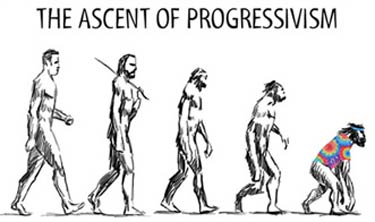By Jibran Khan • National Review
Numerous jurisdictions are suing energy companies. Not for fraud or white-collar crime, but for the effects of climate change.
Bill de Blasio, mayor of New York, recently added his city to the list — and also started to divest the city’s pension funds from fossil-fuel companies. But the phenomenon is primarily a California-centric one. In an address at SXSW earlier this month, even Arnold Schwarzenegger joined the fray.
Presumably, this will soon be a cause célèbre. But it is unlikely to succeed, and lawsuits are a poor way to address the environmental harms of energy production anyhow.
As David Bookbinder at the Niskanen Center notes, while all of the complaints are grounded in the energy companies’ alleged accountability for rising sea levels, they fall into two essential categories. San Francisco and Oakland allege “public nuisance,” and are suing to win compensation for that nuisance. This is the usual category for environmental-harm suits, the same legal theory by which localities have sued over lead pollution, water pollution, and the like. It was also the basis for the successful legal action taken against lead-paint producers in the same area. According to Bookbinder the claim “simply requires demonstrating that the defendant contributed to a condition that constitutes an unreasonable interference with public rights.”
The other plaintiffs — namely, San Mateo County, Marin County, and Imperial Beach — are employing a much more scattershot strategy, not only in the number of defendants that they name (nearly 40), but in alleging “design defect, failure to warn, negligence, and trespass” in addition to public nuisance. This approach gives juries multiple routes to a ruling against the energy companies, but it could backfire, with so many claims being made against such a wide variety of defendants that none of the blows really land.
So what’s the problem? The Union of Concerned Scientists, the activist group that has spearheaded this push for legal action, has compared energy companies’ behavior with that of tobacco companies decades ago. The comparison reveals two fundamental issues with the suits.
First, unlike smoking, energy is a basic good. Some form of energy is necessary to do just about anything, including to meet essential needs such as heating or cooling a home (which in some places is a genuine safety issue). There is an inherent tradeoff between affordable energy and environmental harm, and it makes no sense to ask judges and juries rather than elected legislators to strike the right balance.
Second, a key allegation against cigarette companies was that they hid and denied the harms of smoking, but the parallel allegations against the energy companies are contradictory. We are expected to believe that energy companies covered up the damage done by fossil fuels — and yet publicly available, industry-funded research is cited as evidence that the companies were aware of the harms they were causing. For instance, San Mateo County’s lawsuit notes that Exxon made its climate findings public in peer-reviewed science journals by 1982.
Energy companies have government-granted permits to do what they do.
Another obstacle is the fact that energy companies have government-granted permits to do what they do, a fact that some courts have found highly relevant. In North Carolina v. Tennessee Valley Authority, the U.S. Court of Appeals for the Fourth Circuit dismissed a common-law nuisance action on the grounds that “there is a distinction between an activity that is merely not illegal versus one that is explicitly granted a permit to operate in a particular fashion.” The opinion further notes, citing New England Legal Foundation v. Costle, that “courts traditionally have been reluctant to enjoin as a public nuisance activities which have been considered and specifically authorized by the government.”
Local lawsuits also struggle to address the global scope of the climate-change problem. According to a study that is often drawn upon to make the case for liability, the two largest contributors to the rise in CO2 emissions since 1980 are Saudi Aramco and Gazprom: the state-owned oil companies of Saudi Arabia and Russia. The initial San Mateo suit did name Statoil, a company majority-owned by the Norwegian government, as a defendant, but even this was dropped in an effort to keep the case in state, as opposed to federal, court.
As the eminent legal scholar Richard Epstein puts it, “If you’re going to need a system of regulation, you can do that in a thousand different ways, but erratic, independent lawsuits in separate courts by separate people is the wrong way to go.” This approach is likely to cause backlash that derails real, sustainable reforms to protect the environment.
